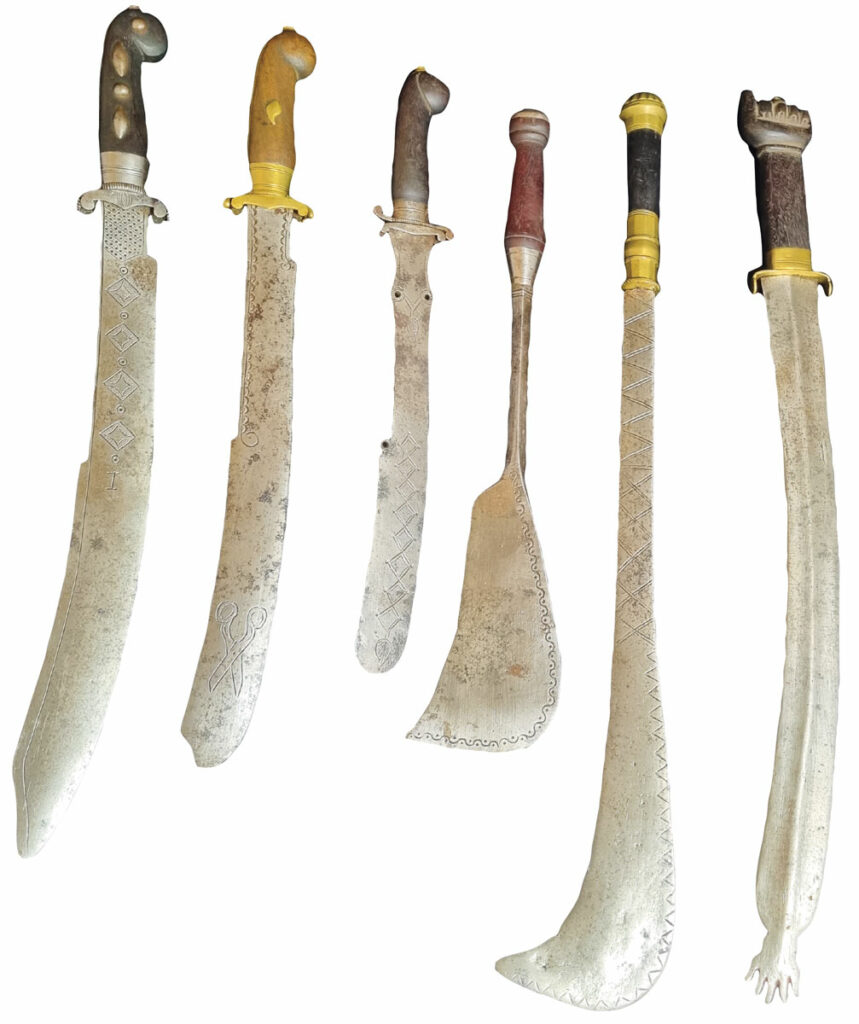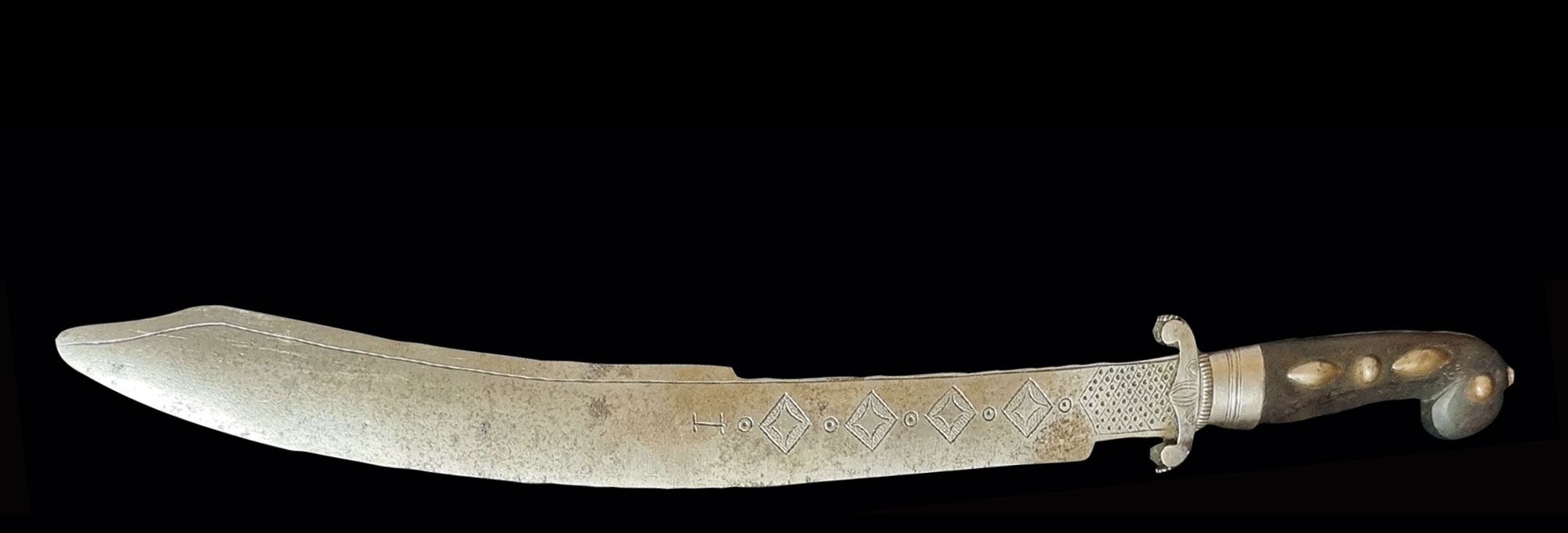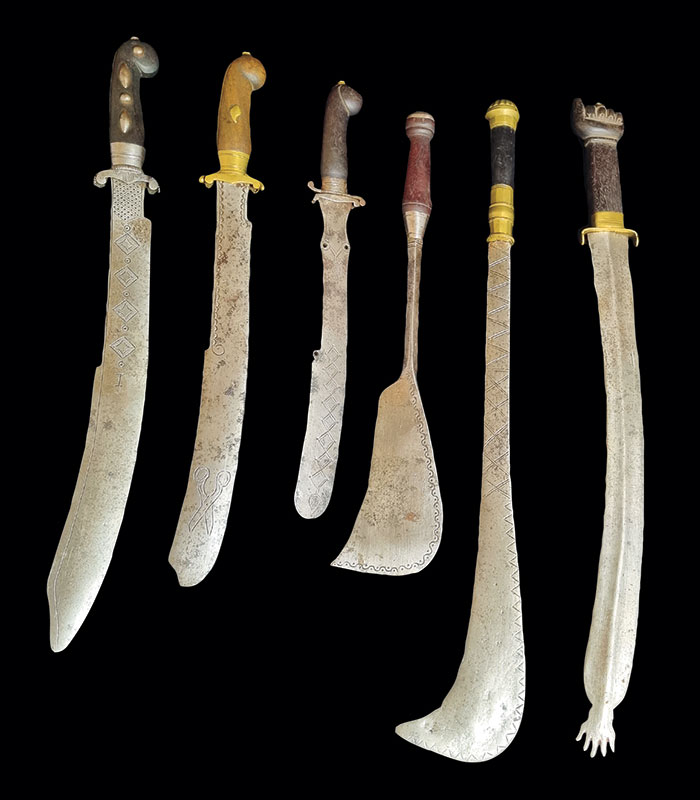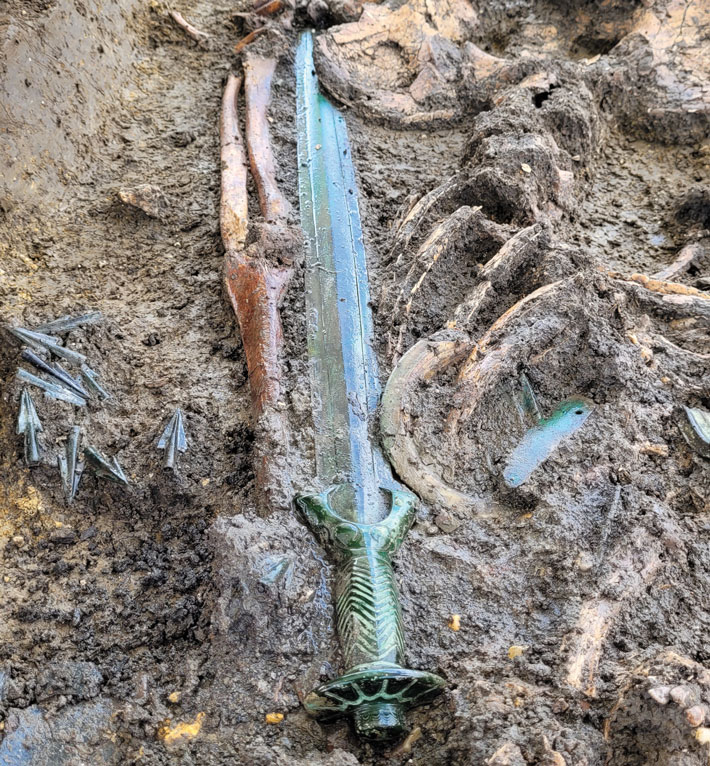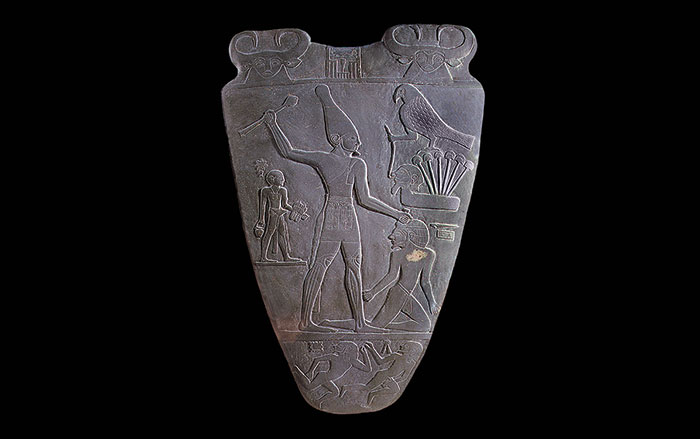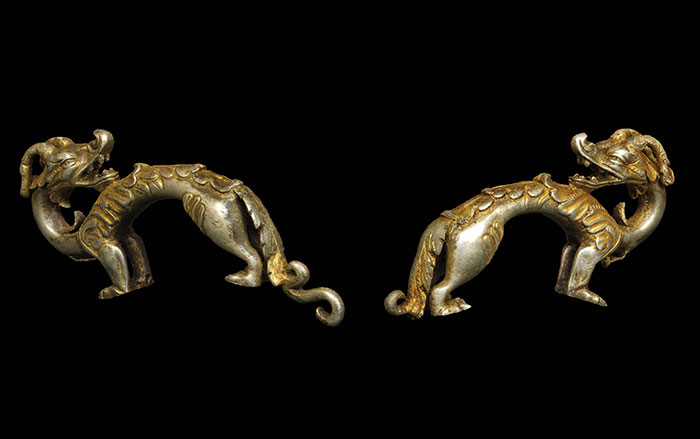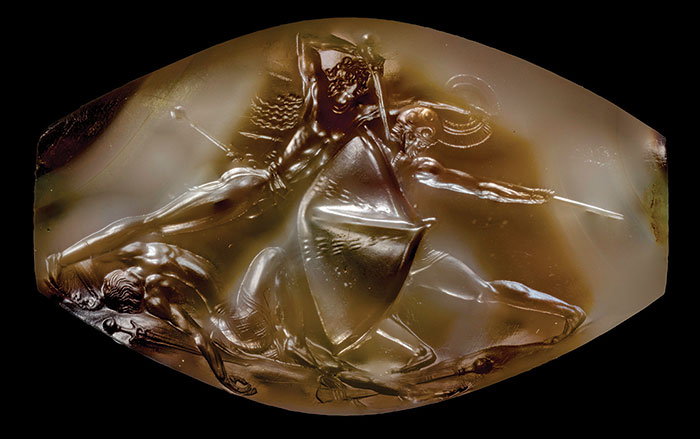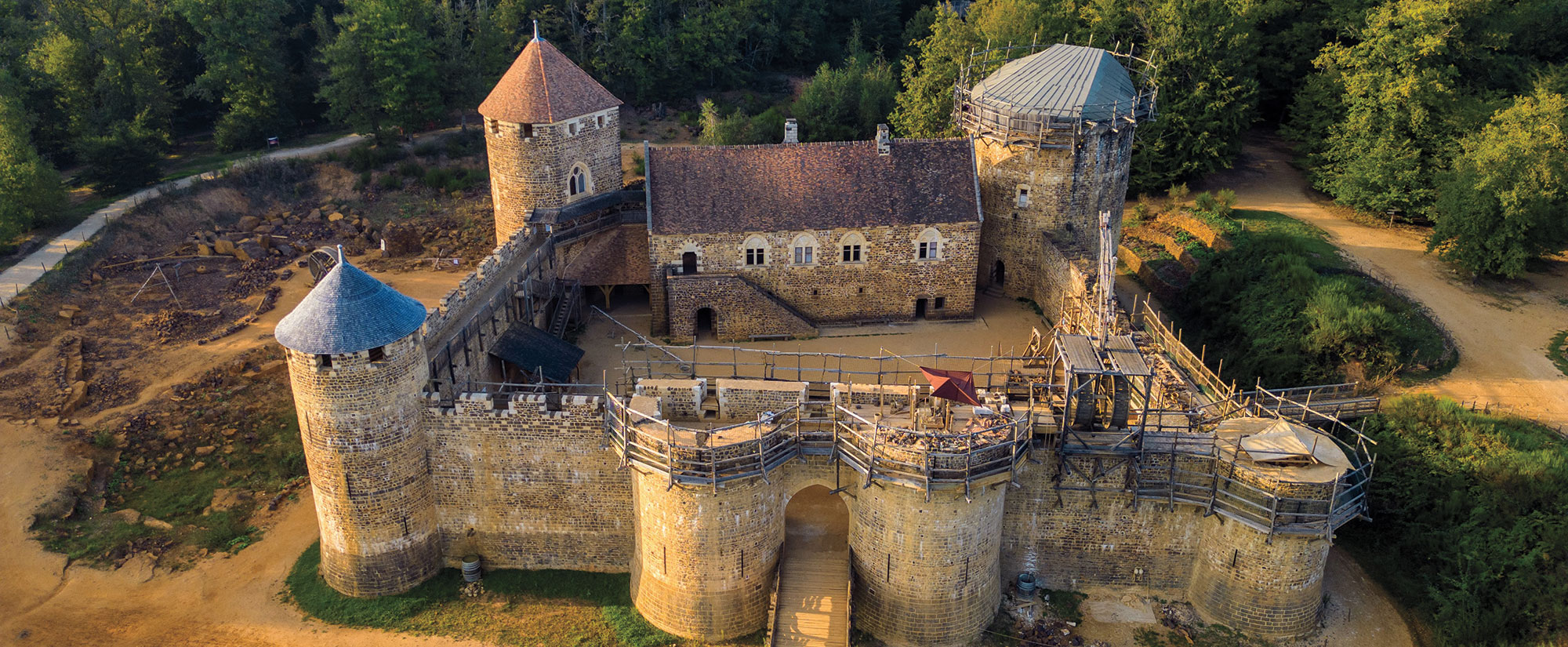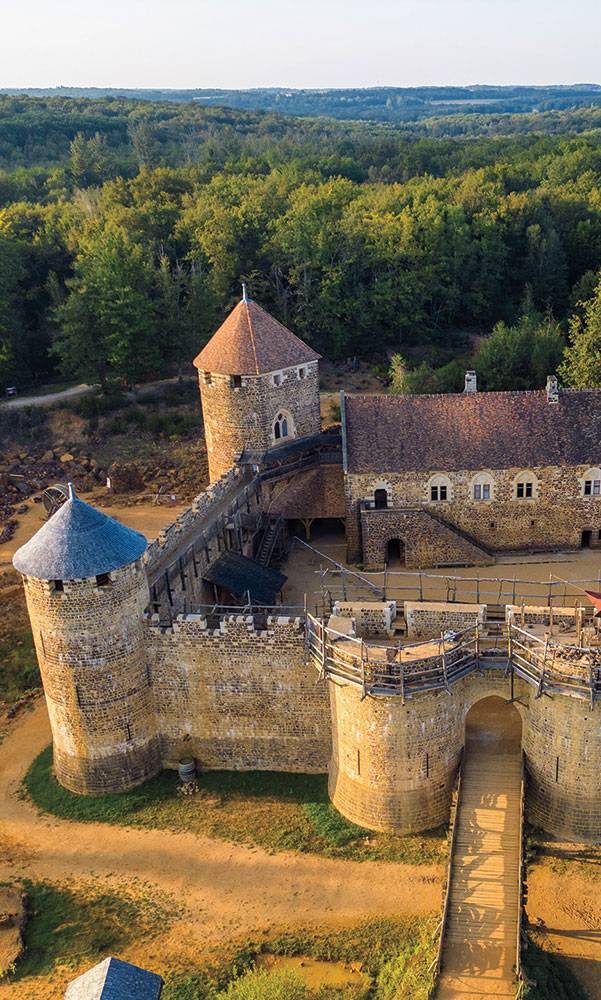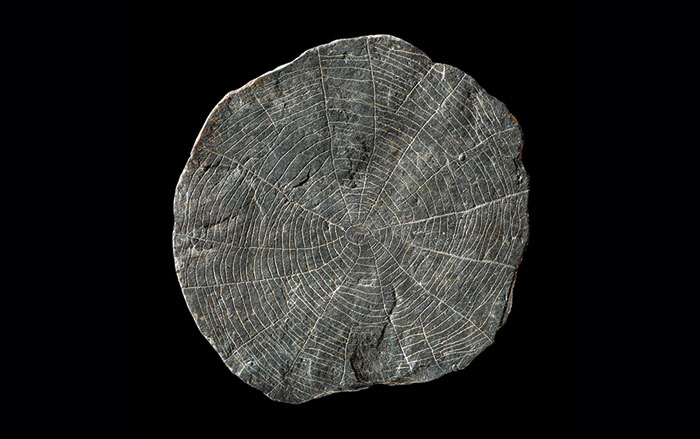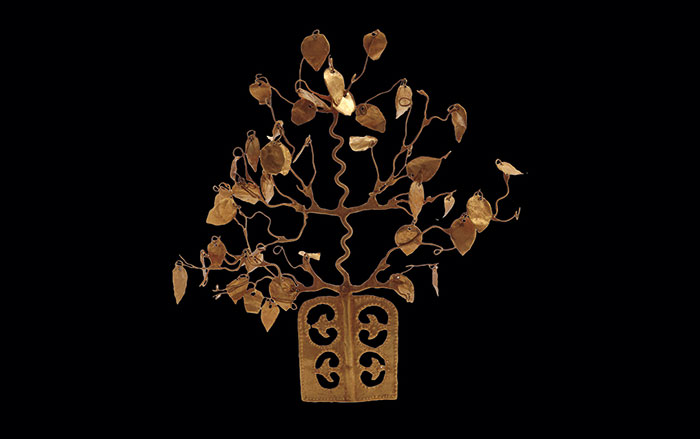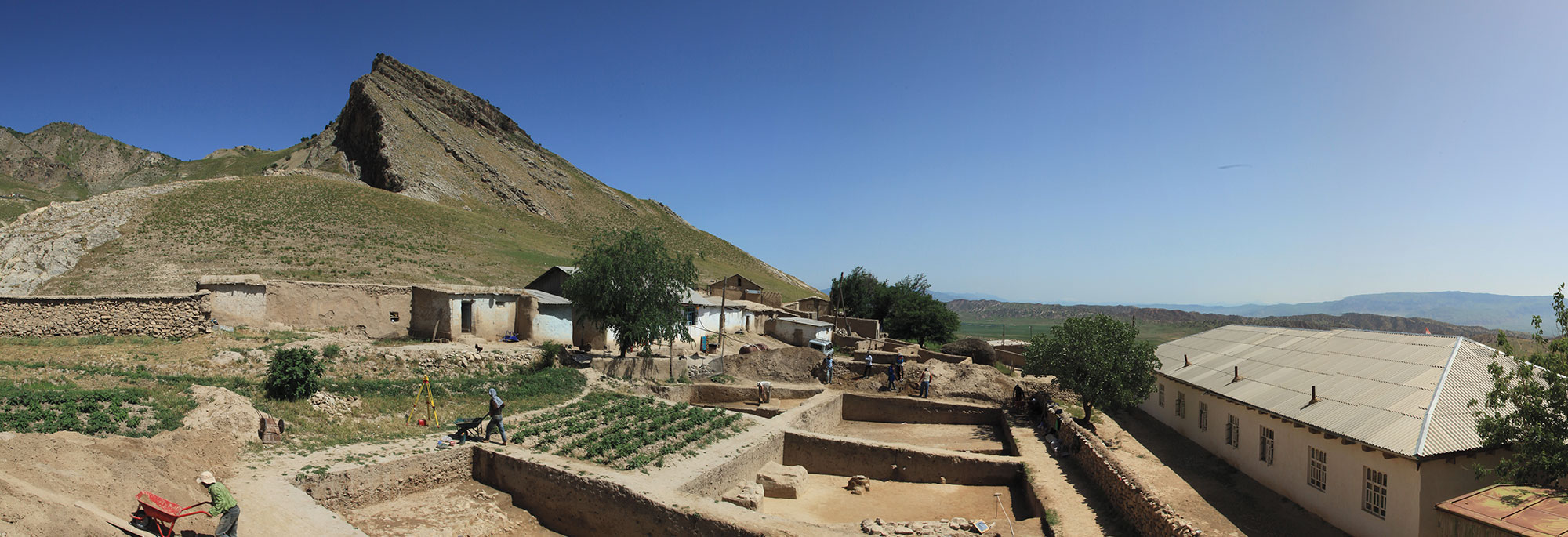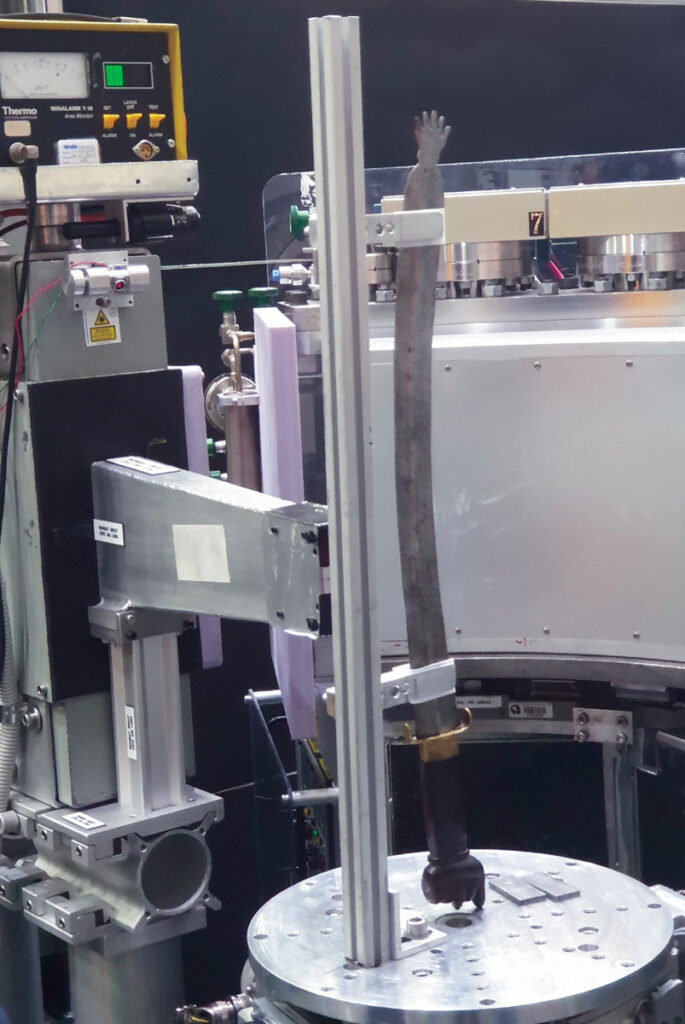
The West African Kingdom of Dahomey, which controlled territory in what is now Benin from the early seventeenth to the late nineteenth century, is associated with finely crafted iron swords. Scholars have debated where the metal used to make the swords came from, as well as who fashioned the blades. To learn more about these weapons, a team recently studied six Dahomean swords using a range of techniques including imaging their structure with neutron beams.
The team’s results indicated that the swords were made of wrought iron, which was produced throughout precolonial Africa. There is no archaeological evidence of iron smelting in Dahomey itself, though the metal could have been sourced from elsewhere in West Africa, such as Bassar in modern-day Togo. Wrought iron was also exported to Africa from Europe at the time, making it difficult to determine the metal’s precise origin. According to Ron Lawrence Anderson, an archaeologist at the University of Sydney, the swords included in the study were all ritual weapons, designed for sacrificing humans or animals, or for other ceremonial purposes, and that African iron was preferred when making this sort of object. “It’s unlikely that they would have used European iron if there were an alternative,” he says.
The researchers discovered that the iron in three of the swords was folded during the forging process in a manner that has never been documented before, strongly suggesting that they were the product of a local metalworking tradition. In addition, Anderson points out, the swords are decorated with an array of incised symbols including leaves, repeating diamonds, and a pattern of sinuous lines and dots, which are associated with the kingdom and are unlikely to have been created abroad.
